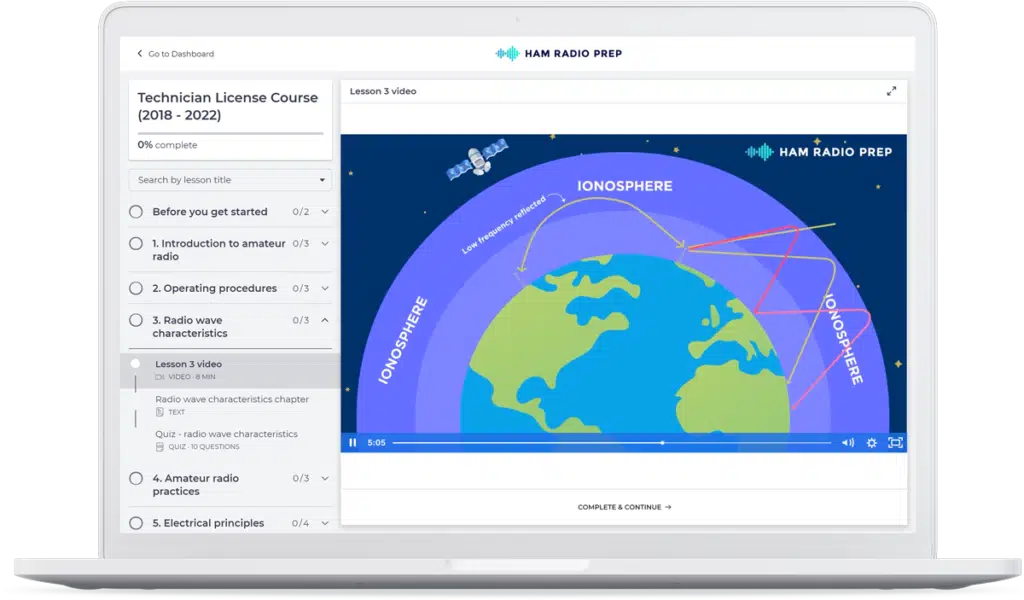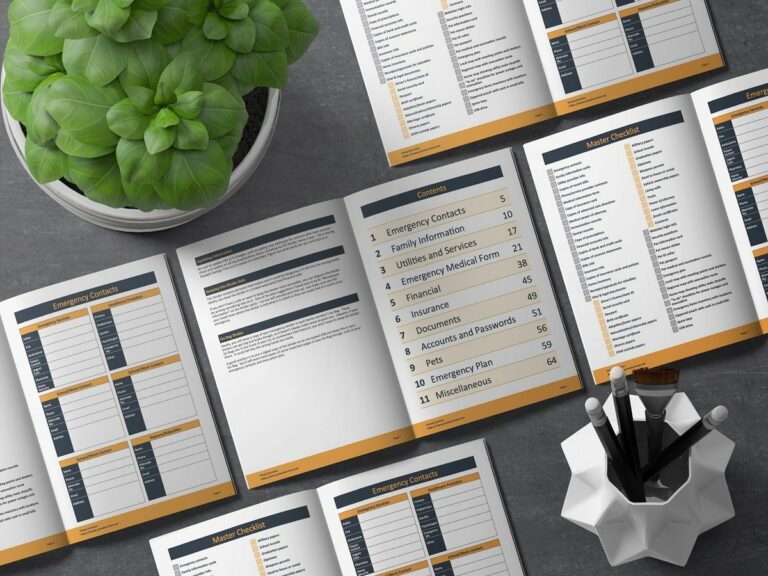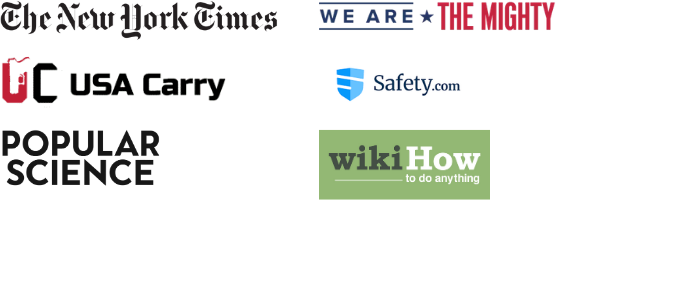Have you ever thought of how you would contact your loved ones after a disaster?
Too many people rely on their cell phones and the internet and take it for granted that these systems will be there for them.
This is exactly what happened in the aftermath of hurricanes Katrina and Sandy. Communications systems were wiped out, and ham radio operators came to the rescue.
Key Takeaways
- During major disasters, traditional communication systems such as cell phones and the Internet may fail. Ham radio is a reliable means of communication in these situations.
- Ham radios allow users to receive first-hand information about ongoing disasters, helping them make informed decisions, such as whether to evacuate or stay put.
- Certain frequencies are specifically designated for emergency communications.
- The operation of a ham radio legally requires a license.
Why Can’t You Rely on Your Phone?
Cell phones have proven to be a very unreliable form of communication in major disasters. First off, there is the issue of the cell phone towers themselves. Earthquakes, high winds, and flooding can destroy cell phone towers, so users lose their signals.
Even if the cell phone towers are still functional, they can get overwhelmed by all the calls in the aftermath of a disaster.
This happened on 9/11 when New Yorkers grabbed their phones to call loved ones and see if they were safe. The cell phone system was so overloaded that calls didn’t go through.
This is known as a mass call event. Landlines were also affected, and Verizon’s entire downtown wire phone service was interrupted for weeks.
The same thing happened during the Boston Marathon bombing.
A satellite phone is a better option for emergency communications, and I used one several years back while in Uganda… But satellite phones are pricey to buy and use.
And, in a disaster like a solar flare, the satellites would be destroyed by EMP.
What About the Internet?
The internet is also highly unreliable as a form of emergency communication.
When the power goes down, so does the internet.
Depending on the scale of the disaster, you might be able to get an internet signal and send an email (assuming that your computer or phone battery hasn’t died).
Since the internet isn’t subject to the same overloads as cell phones, it should still work – but it isn’t the most reliable form of communication for disasters.
Why Ham Radio?
Amateur Radio Service, or Ham radio, is a 2-way radio system that allows you to send messages to other ham operators.
There are other types of 2-way radio systems, but Ham is considered the best for emergency communications because it has the longest range and many channels.
Read about the best ham radios for preppers.
The only real downside to ham radios is that you must be licensed to operate one (note that it is the operator and not the equipment which gets licensed).
It isn’t as hard as you’d think to set up a ham radio system, though there is a long learning curve, so you will constantly learn new things along the way.
To understand how important ham radios are for emergency communications, consider these examples of ham radios in action.
Ham Radios During September 11th
Within minutes of the terrorist attacks on 9/11, volunteer amateur radio operators responded. They helped agencies like the Red Cross and New York City OEM stay in touch with each other. Many amateurs also shadowed officials to help spread the news through the ham channels. They let people know where volunteers were needed.
Hurricane Katrina
During Katrina, 911 was overloaded with calls, which meant that many people were unable to get through and were left stranded and in need of help. There was one case where 15 people were stranded on the roof of a house. They couldn’t get through to 911, but they did manage to call a relative in Baton Rouge. That relative called the Red Cross, which used ham radio to dispatch rescue workers to the location and save the people from the floodwater. There are numerous other examples where ham radio comes to the rescue.
Nepal Earthquake
The earthquake in Nepal last April killed and injured more than 31 000 people. Even more people were made homeless. Nepal’s grid was also destroyed. With frequent power outages and flaky internet connections, it was ham radio operators who filled the communications gap. These heroic volunteers worked around the clock to pass messages between relatives.
Ham Radio for Disaster Information
Even if you don’t need rescuing and you can communicate with your family members, ham radio can still be useful in a disaster situation because of the information you can get through it.
By listening to communications on ham channels, you can get first-hand information about what is happening at ground zero of the disaster. This can help you decide whether to evacuate, the best escape route, and more.
Many ham radio frequencies are specifically for emergencies. You won’t be able to call out on these, but you can get valuable disaster information. Here are some of the most important ones:
- 90: National Guard
- 46: Inter-department emergency communications between local and state police
- 42: Red Cross
- 225: Disaster relief operations by FEMA
- 28: Inter-department emergency communications between local fire departments
- 160: Inter-department emergency communications between local and state agencies for search and rescue
- 475: Inter-department emergency communications between local and state police departments
- 4875: National Guard
- 5125: Armed forces for national disasters
- 55: Civilians agencies of the government during disasters
- 674: Emergency communications and traveler assistance on the GMRS
NOAA Weather Broadcasts and Bulletins:
- 40
- 425
- 45
- 475
- 50
- 525
- 55
- 275
Should You Ham without a License?
Many preppers and survivalists don’t like the idea of getting a license to use ham radio.
There is always the possibility of running a ham radio illegally and hoping you don’t get caught. And, in a true SHTF situation, the FCC will no longer exist to enforce licensing laws!
Here are some of the reasons why you might consider getting your ham license:
- There is a long learning curve with the ham radio. You can easily operate one to send emergency signals. But, if you want to do more with ham radio, you will need to practice – which means getting a license.
- In a disaster like 9/11, you could help your fellow citizens by being a volunteer ham operator. You can’t do this without a license.
- Getting arrested isn’t very conducive to privacy. I’d rather be on a list of ham radio operators than a list of criminals.
If you do decide to study for a license, we recommend you take the HamRadioPrep online course. They have a money-back guarantee if you don’t pass the exam. Use coupon PRIMAL for 20% Off.
 Ham Radio Online License Classes
Ham Radio Online License Classes
The Ham Radio Prep program makes it fast, easy and fun to get your license in just a few hours of study time. They even offer a money-back guarantee if you don't pass your exam on your first try.
Use code PRIMAL for 20% OFF!
Do you have a ham radio license? Let us know your experiences in the comments below.



Some of these comments are why amateur radio has the grumpy old men stereotype. Part 97.403 has a safety of life and protection of property rule that allows anyone without a license to use amateur radio frequencies when there’s immediate safety of human life and immediate protection of property when no other communications are available. The same people claiming to be the license police are the same ones speeding and running stoplights. It’s always best to be tried by 12 than carried by 6.
A couple things:
Ham radios use frequencies, not channels. FRS, CB, GMRS, MURS all use “channels” which are preset frequencies. But for non-hams channels are easier to remember.
And the listing of “frequencies” for disaster info…not sure if they are frequencies or not. No Hz, MHz, or other nomenclature. And the NOAA listings are not frequencies I am aware of in the US. In the US there are 7 frequencies in the 2m band that are used; all in the ranges of 162.400-162.550 MHz.
You may want to provide proper frequencies for the listings and state what country they are for.
I have been in Ham Radio since 1993.
I got Into Ham because of friends. I wanted to help out in the case of a disaster.
I like in the New Madrid Earthquake Zone . I hold the highest license in the United States and encourage all Hams to earn it
Hello and congratulations on achieving such a high class of ham radio license. I am studying for my general class license. My name is David and I have a question to ask. I need to buy a handheld ham radio waterproof tri band what do you recommend?
Depends on your budget. Baofeng makes a nice triband 2/1.5/.75 meter radio. I believe they have IP65 rated units as well. Get the tech ticket and have fun while you learn.
Good article but only part of the frequencies. for a non Ham they would be useless because with only part of the freq. they won’t be able to program a radio. also if a non ham buys a radio ( I like Baofeng UV5Rs ) for an emergency & doesn’t learn to program it & practice with it before an emergency it will probably be useless . KD2SQB
Just “listening” to ham radio signals does not require a license so you could still get valuable information just by listening. For being able to transmit a signal is where a license is required. Go for the highest class license that you can get. That will give privileges in the HF bands if you will need to get some distance. The beginner licenses are often limited enough that you won’t have much more than an FRS style walkie-taklie.
If you are in to tech hobbies it can be a very interesting one!!
N8OT
Thats a really gross under-statement.
“FRS style walkie talkie” Sheeesh.
With my TECHNICIAN license I’ve talked to people in Texas, Florida, Kentucky, & Georgia. With my $30 Baofeng handheld, I can hit the repeater 6 miles from my house and talk to people 60 miles away. With my base station in my living room I can talk to Raleigh (135 miles) , Greenville (75 miles), Rodanthe (60 miles), and I talk to my buddy daily who live 45 miles away.
I guess you’re one of those snobby Hams who feels like if a guy doesn’t have an Extra license and a shack with $5,000 worth of radios packed in it and a 100 foot tower in his backyard, he’s a nobody.
What you claim simpy isn’t true. There isn’t a FRS walkie talkie made that’ll hit Texas from Coastal North Carolina.
I’d like to learn more…we live in a residential area that prohibits towers.
There are other more difficult to see antennas that work well. Once you get into Ham Radio, you can learn as much r as little as you wish. You can get your Technician ticket in an afternoon – called a Ham Cram. It will get you on the air on the upper VHF/UHF/SHF frequencies and a few allocations on the lower HF bands. Ignore everyone and their claims and look for a local club and get the straight skinny from the horse. I’ve had the Extra Class ticket for more than 50 years and an FCC Broadcast license for 55. BTW, my entire station fits into a Pelican-style, waterproof case and my best contact was over 6,000 miles away with a simple antenna. When the band is open a wire and a nail will work. When it’s not, it’s not. My focus is antennas. The rest, I could not care less about. Look into, find your niche and have a blast. Dave AD6AE
Great article congratulations on your ability to hit someone 6000 miles away. I have a technicians license I’m studying for my general what waterproof handheld radio do you recommend please
Great article thank you. What type of radio would you put inside your truck quality wise?
“The beginner licenses are often limited enough that you won’t have much more than an FRS style walkie-taklie.” You must not be a licensed operator.
While hand held walkie-talkie style radios are an option, so are mobile (similar in size to CB radios) and base station radios.
I have hit a repeater from 40 miles away with a ham radio through city jungles and trees with a hand held ham radio as well as a mobile. FRS is lucky to get 2 miles line of sight with no obstacles.
Hi Paul – please could you contact us on [email protected] – I would like to discuss a potential collaboration with you.
Even though we (amature radio operators)hams do try to help people during major disasters and even personal emergencies there is a very good chance a Ham will not reply to your calls if you aren’t a licesesed operator. It only takes a couple minutes to find out if you are licensed. Do yourself a favor and get a license if you plan to use the equipment. It is the law.
K4BDG Bruce, Getting your license is extremely easy. The questions are all published and available. There will be 35 on the test. You can study and practice on line. There are radio clubs in most areas to help you learn, our club has a group of Elmers, they get beginners on the air and started. They are dedicated to helping each other. They will be welcoming if you want to learn. A cheap hand held radio will not do the things people think. It does require practice and understanding. The ARRL is a good starter resource. As we say 73s and stay safe.
Bruce